MARKETING
Bard and ChatGPT will ultimately make the search experience better
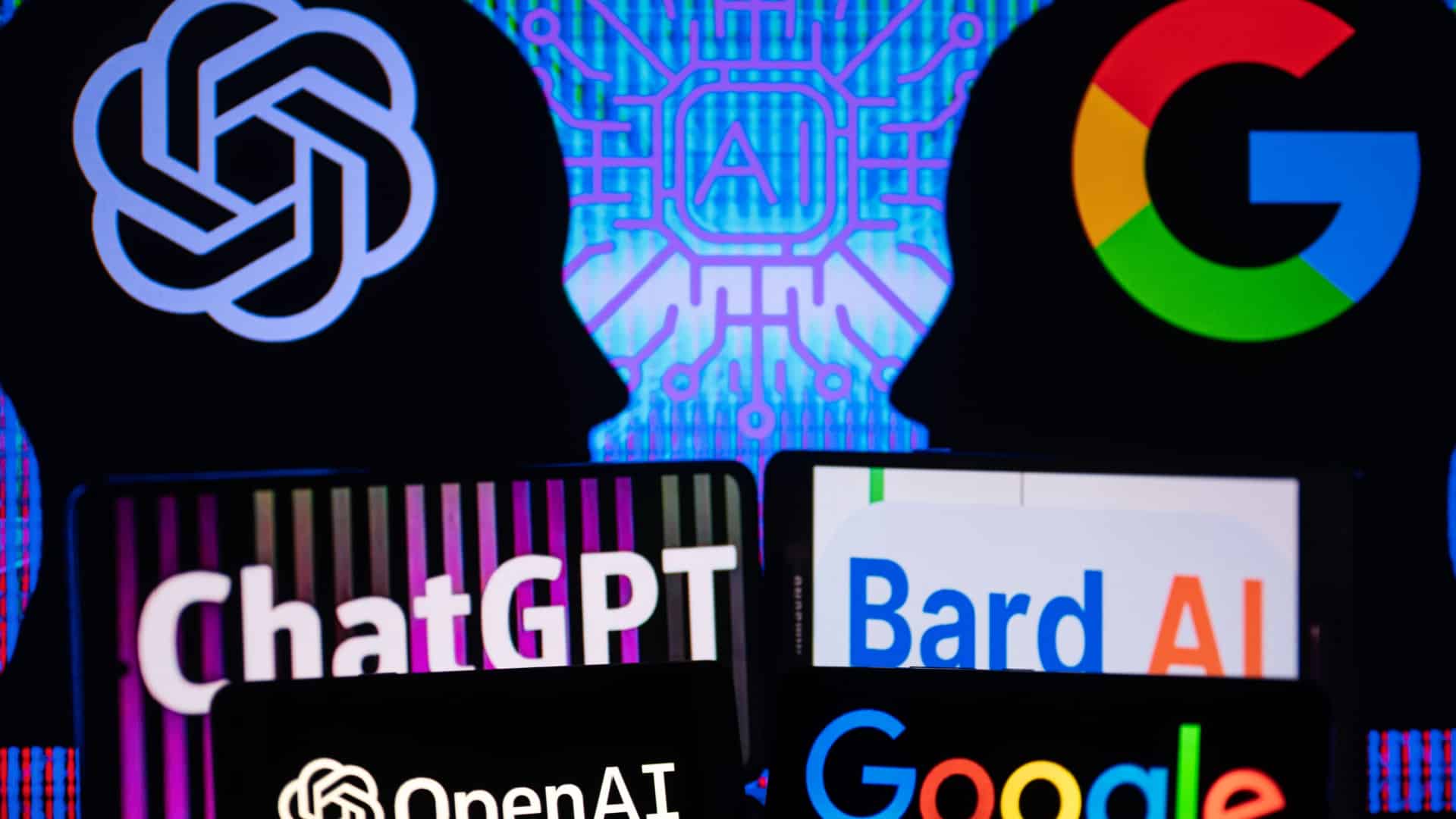
The use of large language models like those developed by ChatGPT and Google are going to impact traditional search. There’s no doubt about that — and the changes are imminent.
Some commentators see trouble looming. Chris Penn of TrustInsight recently told us: “(I)f unbranded search is the lion’s share of your search traffic, particularly your converting search traffic, you should be very concerned. That’s where the large language models will be intercepting your traffic and not giving anything to you or giving very little to you.”
Others are more sanguine. We spoke with Brent Ramos, product director for search at Adswerve. “We’re at the precipice of this new frontier for search which will ultimately be better. I’m not taking a pessimistic view at all; I’m very much looking forward to it.”
An established Google partner
Adswerve is a long-standing Google partner, providing services related to Google products to agencies, analysts, marketers and publishers.
“We have a large portfolio of agencies and a very large portfolio of direct marketers across all the products, whether that’s Analytics or Cloud or the media size of the house,” said Ramos. “My focus has been primarily on the search side of things, but of course I’ve touched the GCP side of things.” Adswerve also has an Adobe Analytics practice.
Changing the search paradigm
Repeatedly emphasizing that it’s early days for conversational search and that we don’t yet know what it’s going to look like further down the road, Ramos is optimistic about a new, more immersive and interactive search experience.
“I think it’s definitely going to change the paradigm of how we understand search today, because as soon as you throw in Bard, let’s say [Google’s generative AI], and it pushes down all the organic ranks, and you have the chat AI upfront, all of a sudden people are going to converge and convert in that experience, and it’s too early to know what it’s going to look like.”
In other words, and as expected, many users of Google search will look first at the answer to their query generated by Bard; they won’t necessarily scroll down to look at links, or even at footnotes that show where Bard found its information.
Dig deeper: Does ChatGPT pose an existential threat to marketers?
The implications for paid search
“What I anticipate is that there will be a new paradigm of what that will mean for paid results, so rather than have a host of links to click through in an index format, we’ll see new formats come up. I think the definition of conversions will change, and the experience of the paid ecosystem will change, but it’s not going to go away.”
The far from resolved question, of course, is what the new experience will ultimately look like. But we are on an irreversible journey, Ramos believes.
“It’s not going to go away,” he said. “Technology will very rarely recede. So we know it’s going to become a new paradigm and move search into this new realm. On the long-game horizon, we can expect to see new ways of conversion, new ways of formatting, SERP is going to get a lot busier, website conversions might decline.”
While some are concerned that, if users can get all of the information they need directly from the AI, the index of links, including paid links, will become irrelevant. Ramos insists that this isn’t something new. “We’ve seen that in social, right? People are converting more within the social channel itself rather than landing onto the actual page, especially for ecommerce.”
A living, breathing conversation
That does mean, however, that there will need to be opportunities within the AI content for people to convert, and Ramos doesn’t pretend he yet knows what that will look like. “Maybe it’s no longer pay-per-click; it’s pay-per-interaction,” he said. “Rather than getting this repository of links to sift through as humans, we’ll actually get this really rich, semantic conversation presented to us. The index or repository we’re accustomed to today will shift into a living and breathing conversation.”
The bottom line, for Ramos, is that whatever it looks like, it’s going to be better. “It will eventually be better over all. To me it’s like back when Google and the internet first started coming out — the big industry of the yellow pages, and publishers were like, ‘What are we going to do?’ And then of course it was ultimately a really good thing.”
The importance of interconnectivity
Even traditional search doesn’t just generate lists of links, Ramos observed. “SERP is one thing, but search also powers things like local listings, maps, ecommerce buy-buttons and all these other things that are interconnected with it and that are crucially embedded in the ecosystem.”
From knowledge panels to videos to dictionary definitions and alternative search suggestions: “All these things that are tangential to search are also wrapped up in that connectivity, so I think that’s the bigger picture people should be trying to understand.”
Even so, he admits: “That’s where I imagine it leading, but this is all speculation at this point because this all very fresh.”
Bumps in the road?
Not only do we not yet know how we’re going to get to this rich, interconnected conversation, but we are already seeing teething problems — from truly disturbing behavior from the AI to outright error.
“There’s definitely going to be a bumpy ascent,” Ramos admitted. “The silver lining is that we know it can be done; it’s more a matter of how fast we can architect against it, and it takes a lot of human capital and power to do so.”
What is he telling his clients at this stage in the journey? “The guidance is to understand holistically — and without your own biases about AI — and accept innovation.”
Ramos sees the competition between Google’s Bard and Bing’s ChatGPT-based generative AI as a positive. “We want to see competition in the marketplace — a marketplace that’s rich with innovation — so on both sides of the house I think it’s a good thing, and they should be pushing each other.”
Get MarTech! Daily. Free. In your inbox.
MARKETING
Updates to data build service for better developer experiences

Optimizely Feature Experimentation users can now benefit from an average of 87% faster data file updates. The ability to generate data files in a faster and more predictable manner enables our customers to make updates to feature flags and experiments more quickly and reliably.
- Datafile build service – Performance, stability
- Webhooks by environment – Lower latency across all environments. Push notification that a new datafile is ready
- Secure environments – Security
Key features
- Smoother workflow
It lets you update feature flags and experiments faster and more consistently as a seamless workflow step. - Better developer experience
Developers can expect faster and more predictable feedback when configuring feature flags during local development. - Faster execution
Product teams benefit from “kill switches” to roll back problematic features and flawed experiments to protect user experience and conversion rates.
Finally…
Speed, performance, and usability are key to delivering a better experience, and as such we are always striving to improve the performance of back-end services. Our improved datafile build service enables you to deliver feature flags and experiment changes to your end-users more quickly and reliably.
Optimizely Feature Experimentation generates a JSON datafile that represents the state of an environment in a customer’s Feature Experimentation project, this datafile is polled for and consumed by our SDKs to enable user-level decisions and tracking.
With our new datafile build service, Feature Experimentation customers will experience better performance and reliability when delivering feature flags and experiment changes to end-users.
MARKETING
The Ultimate Guide to Email Marketing

Email is more than just an informative message; it is a sales tool that helps the brand reach its potential customers. That’s why email marketing continues to find a place in many brands’ marketing strategies. Also considered the most effective medium to reach a potential audience, email marketing is estimated to proliferate to more than 370 billion emails per year by 2025.
Statista’s recent report revealed that there would be a rapid and consistent increase in the use of email marketing as a promotion tool. Another report published on Financesonline.com projects that there will be 4.5 billion email users by 2024 compared to 4 billion in 2020. The rapid increase in the use of email has forced businesses to incorporate them into their marketing strategies.
Therefore, companies that want to attract customers to their brand organically must be aware of the core fundamentals of email marketing. Therefore, in the succeeding part of the article, we will understand in-depth email marketing. Everything will be discussed in the following paragraphs, from its meaning to tools.
The Ultimate Guide To Email Marketing
Experts believe that customers love to hear from the brand they love; that’s why they choose to subscribe to the monthly and weekly newsletters that companies send to make them aware of new products, among other things. So, to understand how to formulate an effective email marketing message, it is important to understand what email marketing is.
What Is Email Marketing?
Often digital marketing definition includes email marketing in it. So, what is email marketing? It is a process that revitalizes email as a promotion and advertising tool. Through email marketing, potential customers learn about new products, services, discounts, and offers, among other things. Therefore, it is an effective marketing medium that bridges the gap between the brand and the customer. It also allows brands to communicate with customers directly.
Due to its umpteen benefits and easy-to-use interface, email marketing has become one of the most popular marketing strategies globally. Large, medium or small businesses can implement email marketing into their brand promotional strategy because of the reasons listed below.
Why Is Email Marketing Important?
- It is a cost-effective marketing strategy compared to outdoor, news, and television advertisements.
- It has a higher return on investment (ROI) and helps brands reach a wider audience.
- It is an effective medium to reach new customers with minimal resources.
- It easily integrates into different marketing channels.
- It offers personalization by assisting in creating targeted messages for specific customers.
Email marketing is a powerful promotional tool that helps brands successfully persuade their customers. Its unique features and characteristics force customers to take action on them by reading, deleting, or archiving them. Therefore, it is too hard to avoid email. To effectively formulate an email marketing strategy, a marketing manager should follow a few steps that we will be discussing in the next part of the article.
How To Formulate An Email Marketing Plan?
Follow these steps to formulate an effective email marketing plan successfully:
- Understand your audience’s needs
- Include a call-to-action
- Decide the content of the email
Formulating an email marketing plan is an elaborative process requiring the marketing manager to perform various steps to understand the target audience. Once you have understood your audience’s needs, it is easy to formulate the content of the email. Unfortunately, brands often concentrate on writing email content that aligns with the needs of their audience. It is effective but compromises the organization’s goal. So, while formulating an email marketing plan, try to integrate business goals and audience needs into the strategy to get more effective results.
Different types of email marketing incite different results. So, depending on the market, audience, and business size, a company can decide the email marketing type. Below are some of the popular types of email marketing prevalent in the current times.
What Are The Types Of Email Marketing?
• Newsletters
Newsletters are a significant way of informing the audience about new products or services launched by a brand. In addition, it is used to help the users understand the brand better. Therefore, they follow a strict delivery schedule, which cannot be shifted or changed frequently.
• Welcome emails
Welcome emails are sent to new customers or potential users whom the brands wish to turn into consumers. This type of email marketing aims to educate audiences about the brand, its products, services, and brand goal, among other things.
• Promotional emails
Promotional emails’ main focus is to persuade customers to buy a product or service. Therefore, they are designed to influence the audience to buy the product.
• Sponsorship emails
Brands can use different types of email marketing to reach the audience. Sponsorship email is summarized as the process of promoting a product and service on another brand’s email ad space. In addition, it is used to attract new customers to the products.
Email marketing is a marketing activity that can be intimidating and strenuous for marketing managers. Therefore, brands use many online tools to automate and classify email marketing processes. In the last part of the article, we will discuss the tools of email marketing that helps brands promote their product or service effectively.
What Are The Tools Used For Email Marketing?
Here are some marketing tools that brands commonly use.
- Mailchimp
- Campaign Monitor
- Sendinblue
- Easysendy
- SendPulse
Besides email marketing, there are different types of digital marketing strategy that helps in reaching the targeted audience effectively. To understand the intricate details of different digital marketing strategies, marketing managers can take digital marketing certification courses offered by Emeritus India in association with renowned Indian and international universities.
MARKETING
How To Protect Your People and Brand
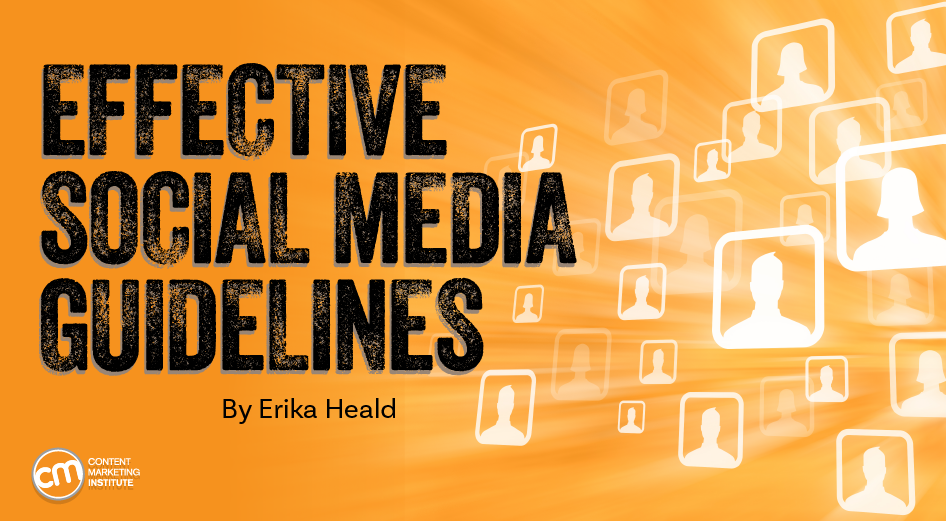
Your lack of social media guidelines could discourage employees from becoming brand advocates and even applicants from joining your company. I speak from personal experience.
When I first joined LinkedIn, my profile said I worked for a “Bay area Fortune 500 financial services company” instead of noting its name and linking to the company page. Soon, many of my colleagues’ profiles said the same thing.
You see, our organization was trying to figure out its social media policies within the confines of a highly regulated industry. It blocked access to any website with a social component — including YouTube. When employees were asked about using social media on their own time and devices, the company’s initial guidance was they didn’t want them using social media at all.
Well, that wasn’t going to happen. Instead, thanks to lengthy conversations with my legal and compliance colleagues, I hit upon a solution: I scrubbed any mention of my employer in all my public profiles.
Why employee social advocacy matters
Why do employee brand advocates matter? Because people are increasingly wary and distrustful of brand and government claims and prefer input from their peers.
The Edelman Trust Barometer underscored this message. In its 2024 iteration, it found people were concerned that the media (64%) and business leaders (61%) are purposely trying to mislead people by saying things they know are false or gross exaggerations.
This shift in trust becomes a competitive advantage for brands that cultivate thousands of eager brand ambassadors, but this requires documented employee social media guidelines to not only allow your team members to thrive on social but to protect your brand from legal risks.
Take a responsible approach to workplace social media policies
Whether you like it or not, employees will talk about your company on social media, and it’s their federally protected right to do so.
Many businesses react with fear and develop extensive restrictions around what employees can or cannot say online in their company social media guidelines. They require employees to agree to a list of don’ts and end the conversation.
However, innovative companies increasingly prioritize employee advocacy, seeing both employee retention and bottom-line advantages. A recent case study showed tech leader Salesforce activated about a third of its 73,000-person employee base as brand advocates, resulting in a 2,000% ROI on its social ambassador program.
Social media guidelines for employees serve as guardrails for online activity and show employees you want them to be engaged online, helping to build on your company’s social media success.
Follow the essentials for your guidelines
The length of your company’s social media guidelines is less important than their accessibility and quality. Ensure any employee can understand the guidelines. Create one-pagers or cheat sheets for specific activities, like training or unique campaigns.
At a minimum, all employee social media guidelines should include the following elements:
- Brand’s purpose on social media — Document the brand’s purpose for each social platform. Whether for recruitment, content amplification, customer advocacy, etc., the guidelines should explain why the company exists on each channel and how employees can support that purpose.
- Company style guide — List any trademark needs and spelling of company products and services so that employees correctly present the brand. You should also define your brand personality and any language considerations.
- Access to shared brand asset folder — Create a central folder employees can access for company logos, how-to’s, shared FAQs, branded profile headers for social sites, and more. Consider creating a list of preferred hashtags and their purposes, especially with company hashtags such as Dell’s #IWorkForDell or IBM’s #ProudIBMer. Keeping this information in one place increases the likelihood that employees will stay on brand.
For a deeper look at these areas, including resources to help you define your social media goals, check out my article, Why Social Media Guidelines are the Key to Unlocking Employee Brand Advocacy.
Use guidelines as a brand defense
The stakes can be high for enterprises when employees use their social media channels in unapproved ways, and savvy companies know the importance of developing extensive social media guidelines.
Get ahead of potential issues and address these all-too-common social media pitfalls in your employee social media guidelines:
- Legal concerns — Make it incredibly clear at the start of all projects what is and is not approved for social sharing. Also, while many people differ on the use of “views-are-my-own” disclaimers, large enterprises should discuss whether they want employees to have such a clause on their accounts.
- Unsanctioned brand accounts — When your company spans your country or the globe, employees may create localized accounts. Address this by listing all official corporate accounts in your social guidelines and asking team members to use only those for brand-related matters.
Consider having a social media request form that allows employees to suggest new accounts or content. This way, their enthusiasm can be better harnessed with a conversation versus an email request to delete the rogue account.
- Departed employees — As employees move on to different career opportunities, they may forget to update their profiles to note they are no longer with your company. This could cause confusion when they start posting content about their new companies or when customers search LinkedIn for staff. While you cannot force individuals to change their social account information, you can at least make the request a part of the exit or off-boarding process.
Enterprise social media guidelines examples
Many brands make their company’s social media guidelines public. These examples can serve as great models for your company’s guidelines. Keep in mind, though, that these are just public-facing documents. The organizations may have more expansive guides for internal audiences.
Each of these three examples has unique elements, but they boil down to address the same point — not everyone knows how to act online.
- Stanford University: These extensive guidelines have a small yet informative section on an individual employee’s social media use. The main points cover how employees are responsible for what they say on social and how they should think about how their social engagement may affect the organization’s reputation. While this may seem general, the policy also links to the university’s information security and privacy policies. What truly sets this social policy apart is its thoroughness in discussing using social on behalf of the organization.
- IBM: What stands out in this guide (no longer available on IBM’s public site) is that employees are clearly encouraged to engage in industry conversations online and have their own blogs. “Bring your own personality to the forefront” is part of the company’s guidelines, with the necessary caveat to not use offensive or harmful language.
- Dell: This policy is distilled into five easy-to-digest bullet points for employees and directs them to the Dell social media team email for additional questions. It tackles the issue of rogue accounts, noting that an account created for Dell may be considered Dell property and that accounts cannot be created to ride on the success of Dell’s corporate accounts.
Educate employees on the social media guidelines
As part of every employee’s onboarding, a member of the social team should discuss the company’s social media policies and guidelines and help any new hires set up their channels in a brand-relevant way.
To maintain and grow awareness of the company’s social media policies, get creative:
- Host lunch-and-learn conversations. These informational meetings allow employees to enjoy their food while you discuss topics relevant to your company’s social media channels. If your company has multiple offices, hold a video meeting. Record the conversation to provide a playback file for those who cannot attend.
- Post social media office hours. If employees are hesitant to ask questions during meetings or regular day-to-day operations, give them a safe place for in-depth, one-on-one time by hosting regular social media office hours. This strategy establishes your social team as a helpful resource rather than the brand police.
- Send social media amplification emails. Email employees regularly to share content you want them to amplify. Include suggested text for easy plug-and-play for busy employees. You cannot rely solely on email, though, as internal emails have an average open rate of 76%.
- Create a social media Slack or Teams channel. If Slack or Microsoft Teams is where work happens in your organization, share all your social content there as well.
- Hold employee meetings. Create regular update/reminder slides employees can include in presentation decks during company all-hands, all-team meetings, or individual group or office meetings.
- Use the company intranet. An intranet can be a great resource for increasing productivity and distributing information to employees. Share updates to the social media policies and use it as a hub for all your social resources.
- Develop training videos. With more internal resources available, enterprises can explore using video to educate employees on topics related to social. Research has found that viewers retain 95% of a message when they watch it in a video compared to just text, so the time commitment to create a video could pay off in message retention.
Continue success with employee social media guidelines
In addition to the core company social media guidelines, ensure that employees can access the brand voice so they can mirror your brand’s language and engage with content that you think best emulates what you want to see your employees doing on social media platforms.
Ongoing monitoring and education are the keys to getting the most out of your guidelines. But with an eager brand advocate base on your side, you’re more likely to see the social ROI you need to achieve your goals.
Updated from a January 2020 article.
HANDPICKED RELATED CONTENT:
Cover image by Joseph Kalinowski/Content Marketing Institute
-
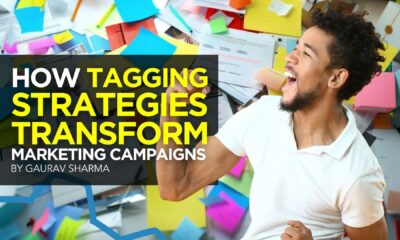
 MARKETING6 days ago
MARKETING6 days agoHow Tagging Strategies Transform Marketing Campaigns
-
SEARCHENGINES7 days ago
Daily Search Forum Recap: May 3, 2024
-

 SEARCHENGINES6 days ago
SEARCHENGINES6 days agoThe Industry Mourns The Loss Of Mark Irvine
-

 MARKETING4 days ago
MARKETING4 days agoA Recap of Everything Marketers & Advertisers Need to Know
-

 SEO6 days ago
SEO6 days agoWhat Is Social Listening And How To Get Started
-

 AFFILIATE MARKETING7 days ago
AFFILIATE MARKETING7 days agoKeep the Office Cool This Summer with $10 Off a Klima Thermostat
-

 MARKETING5 days ago
MARKETING5 days agoThe key to correcting the C-suite trust deficit
-

 AFFILIATE MARKETING6 days ago
AFFILIATE MARKETING6 days agoStay Focused and Accessible with These $40 Conduction Headphones




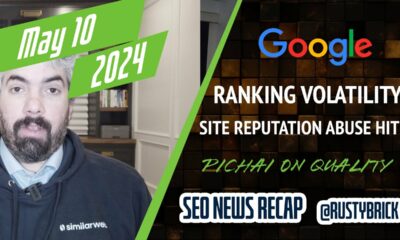







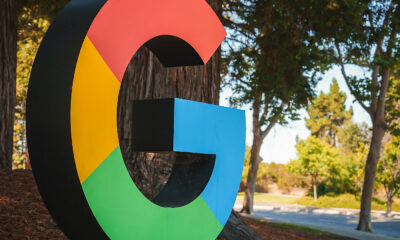



You must be logged in to post a comment Login